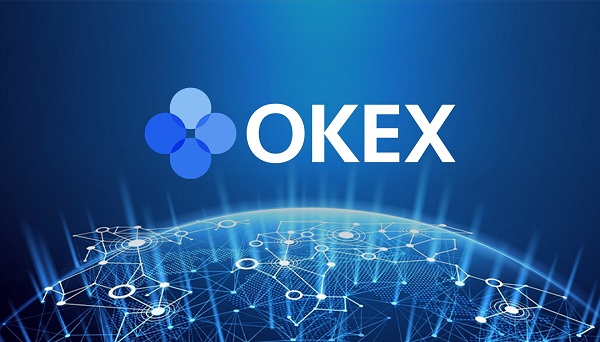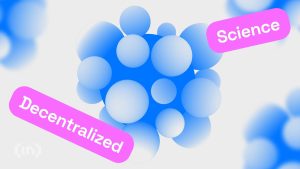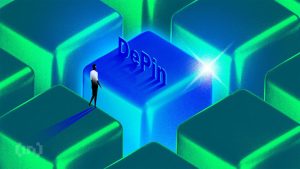Are Blockchain Networks Living Organisms?

In the recently published paper “Emergent Bioanalogous Properties of Blockchain-based Distributed Systems,” a team of researchers raised and investigated the hypothesis that blockchain networks manifest the characteristics of living organisms.
Thus, they meet some definitions of life, exhibiting response to the environment, growth and change, replication, and maintenance of homeostasis.
Furthermore, according to the authors, the combination of blockchain technology with artificial intelligence (AI) based on artificial neural networks (ANN) could lead to the creation of a “distributed organism” with properties not found in nature.
Such an organism would have the ability to pass on acquired characteristics to offspring, with high speed and accuracy of genetic carriers, and potentially unlimited lifespan.
A new model of life
An international team of scientists, Oleg Abramov, Kirstin L. Bebell, and Stephen J. Mojzsis, introduced a new model of biological system in a paper published in the journal Origins of Life and Evolution of Biospheres on August 7, 2021.
To do so, the researchers used technology familiar to cryptocurrency proponents and a blockchain-based distributed virtual machine (dVM).
According to them, public dVMs “provide an uncontained environment for the development of artificial general intelligence (AGI) with the capability to evolve by self-direction.”
Their research goes back to the physical and chemical basis of life and the concept of self-organization.
The scientists begin by explaining the thermodynamic principle of entropy (S), which is popularly interpreted as a measure of a system’s disorder.
From a cosmological perspective, it leads the universe to increase dispersion, destroying structure. It has even become one of the bases for measuring the direction of the flow of time (the thermodynamic arrow of time).
However, research dating back to the 1960s indicates that there are so-called “dissipative structures.”
These are characterized by a decrease in entropy with time, an increase in order, and self-organization. They owe these unique properties to their ability to effectively increase entropy in their surrounding environment.
They undoubtedly play a fundamental role in biological processes leading to the maintenance of autonomy, survival, and reproduction of organisms. The hierarchical and highly organized structure of living organisms is made possible by the accelerated decomposition of the elements of their environment.
Informative entropy and emergence
An extension of the thermodynamic principle of entropy and its consequences was the discovery of information entropy.
It turns out that measures of the (dis)ordering of a thermodynamic system are losslessly expressible in terms of bits, i.e. units of transferring information.
The features of self-organization or evolution, so far granted only to biological objects, can be successfully applied to computing entities. Since the 1990s, the best-known examples are cellular automata and neural networks. They are all manifestations of the emergence phenomenon that is central in the biology and philosophy of nature.
Emergence means the appearance of new, unprecedented features of a system. These appear after the system exceeds a sufficiently high degree of complexity. The slogan for emergence is that the whole is more than the simple sum of its parts.
In recent research, it appears that highly hierarchical self-organizing systems within machine learning are a manifestation of a fundamental link between cybernetic and biological systems. It turns out that ANN-based AI exhibits features of creative self-organization and emergence.
Living blockchain networks?
What does blockchain technology have to do with all this? Well, it turns out that with the view of life presented above, some networks based on blockchain technology may exhibit the characteristics of a living organism.
The authors of the article define blockchain as “distributed append-only time-stamped data structure developed by an anonymous individual or group.”
They reach back to the pseudo-anonymous creator of Bitcoin, Satoshi Nakamoto, for this definition. However, today we know that many blockchain networks have overt designers and developers in the form of individuals or institutions.
An interesting insight from the authors is a comment on quantum computers. They argue that the simple structure of blocks, consisting of “data” and “header”, and the widespread use of the SHA-256 hash algorithm, make them immune to the potential threat from future quantum computers.
The authors go on to point to the many blockchain-based applications of peer-to-peer networks already in operation today: cryptocurrencies, security, decentralized virtual reality, device management, the Internet of Things (IoT), privacy, and many others.
The application to which they devote their further research is the distributed virtual machine (dVM). Its applications range from the creation of smart contracts, decentralized applications (dApps) or decentralized autonomous organizations (DAOs).
The latter, DAOs, are the best environment for developing artificial intelligence based on artificial neural networks. This is where the features associated with life can be found. The largest of these, and best known, is the Ethereum Virtual Machine. Its performance far exceeds that of traditional standalone supercomputers.
Three basic similarities
When looking at how the Ethereum network works, researchers point out at least three similarities to living organisms:
Dissipative structures at multiple levels of organisation, e.g. smart contracts.Adaptive processes based on feedback from the external environment, e.g. gas price variations.Duplicated and repetitive instructions contained in information carriers.
The following illustration shows the internal organization of smart contract paths in the Ethereum network (a) and the changing gas prices as more blocks are mined (b). Both processes require features of self-organization and feedback that are characteristic of living organisms.
Smart contracts and Ethereum gas fees / Source: link.springer.com
Blockchain networks and DNA
Heading towards a more detailed comparison of the principles of blockchain networks and the functioning of living organisms, the researchers start with the data carrier. They look at the similarities and differences between the structures and functionality of blockchain and DNA.
They first point out that DNA (deoxyribonucleic acid) acts as a genetic code and consists of a double chain of molecules. Similarly, the blockchain acts as a carrier of information or a specific code for computers.
In the case of Ethereum, the coding language is Solidity, based of course on a zero-one binary system. For DNA, on the other hand, the quaternary system applies, as the fundamental information carrier can have one of four values, corresponding to protein structures: A, C, G, T.
They go on to stress that the execution of instructions stored in the blockchain can be compared to gene expression. Moreover, both structures contain markers for the information encoded in them (hashed block headers). Both DNA and blockchain can then replicate themselves using the data they contain.
Similarities between DNA and blockchain / Source: link.springer.com
Despite this, according to the authors of the article, there are also a number of differences. They list at least four of them:
Blockchain has a much higher information content and is constantly increasing in size, DNA remains largely unchanged.Blockchain has a much higher level of redundancy, protected by both a large number of verification nodes and a strong encryption algorithm.DNA accumulates mutations that drive Darwinian evolution, blockchain is immutable and retains all data.DNA contains introns (apparently inactive regions), blockchain has a much higher density of data and instructions.
It is interesting to note the conclusion the researchers come to after analyzing the above similarities and differences:
“Blockchain may be a superior genetic carrier for evolutionary efficiency, as it does not rely on random mutations and trial and error, nor does it experience information loss as it responds to selection pressures.”
A comparison of human DNA, blockchain networks and Ethereum / Source: link.springer.com
Key elements of life
In the following section, the researchers focus on the possibility of attributing to blockchain networks the detailed characteristics that are traditionally associated with biological life.
They analyze a number of features and functionalities that a system must manifest in order to be called a living organism. Although it is not easy to find a complete list of them, most biologists agree on the following:
Responding to the environment.Growth and change.Reproduction and offspring.Complex chemistry.Maintenance of homeostasis.Cellular structures.Transmission of traits to offspring.
So if there is evidence that blockchain networks manifest at least some of these, then calling them living organisms may be justified. Let’s look at a few examples.
Response to the environment and homeostasis
A functioning blockchain network reacts to the external environment as it depends on changes in resources from the surroundings.
An example of this is the proof of work (POW) protocol and the use of computing power made possible by electricity consumption.
In addition, it was pointed out that gas prices and the difficulty of extraction adapt to changing demand and allow the network growth to be kept at an averaged, constant level. Additional controls limit the maximum block size and the total gas expenditure per block.
The researchers emphasize that preserving these functions maintains a dynamic relationship with the environment and keeps the system in balance (homeostasis):
“Overall, the system responds dynamically to external stimuli such as varying levels of use and the total number of nodes by using negative feedbacks (regulatory mechanisms), which are subordinated to a superior positive feedback (potential for expansion).”
Growth and change
Blockchain networks show at least two types of growth:
Lengthening the network by adding new blocks.Increasing the number of nodes over time.
An additional growth factor is a kind of “regeneration” of the system by replacing components with newer ones. Technological development makes the computing power of individual nodes of the network increase.
Reproduction and inheritance
The process of reproduction and inheritance in the blockchain world occurs through the “hard fork” mechanism. Such a fork is a way of implementing changes in control mechanisms in response to the pressure of something analogous to natural selection.
When the properties of a blockchain network change, then the network forks into a “parent” with old rules and a “child” with new rules. The parent network continues to evolve according to its own rules. The new network inherits its parent’s history but is a separate blockchain after the hard fork.
Reproduction and inheritance by hard fork / Source: link.springer.com
Cellular structures
According to the argumentation of the authors of the article, blockchain networks are examples of cellular structures and “possess functional similarity to biological cells.”
Among the organelles of such cybernetic cells they distinguish:
An information carrier: A memory or hard drive that performs the function of DNA/RNA.The information processing apparatus: A processor, which performs the function of ribosomes.A power system: Which performs the function of energy production.Protection from the external environment: Electrical insulation, which performs the function of the cell membrane.
Evolution
Blockchain networks are subject to evolution in both the Darwinian view and the so-called “neuroevolution” or directed evolution view.
The former occurs through “blind” random mutations, leading to natural selection. The latter allows for the selection of desired developmental paths based on accumulated experience and learning mechanisms.
Such evolution, like the evolution of living organisms, leads to increasingly complex hierarchical structures. Starting from simple instructions in the form of smart contracts, through decentralized applications built on top of them, to decentralized autonomous organizations.
Combining such evolution with increasingly sophisticated artificial intelligence mechanisms could lead to new generations of blockchain networks.
These could automatically guide their development, making modifications to code based on successive iterations of instruction execution and experience gained. Such “neuroevolution” would occur much faster than Darwinian evolution, and its products would be more efficient.
Hierarchical structure
Finally, the final manifestation of life in blockchain networks is their hierarchical organization. Researchers note that the ever higher-level structures in blockchain technology have their organic counterparts.
Interestingly, they are all a kind of cybernetic dissipative structures and contribute to the multi-layered emergence phenomenon.
Comparison of cybernetic and biological hierarchy units / Source: link.springer.com
The common ground between the two hierarchies – cybernetic and biological – is the transmission of electrical energy. As the researchers state:
“Generation, transmission, and processing of electrical signals is fundamental in all computer systems, as well as many biological systems, such as nervous systems of animals.”
Significant differences
Despite the many similarities between a cybernetic blockchain network and a biological living organism, there are still some features that stay divergent. For example, networks remain virtual creations, while biological organisms are physical creations.
Furthermore, we mentioned above the different lengths of genetic carriers, the (in)mutation-sensitive source code, the (in)finite lifespan or the different types of evolution: Darwinian and directed.
The following table summarises the most important differences between these two types of dissipative systems:
Differences between cybernetic and biological organisms / Source: link.springer.com
It turns out, however, that the researchers believe these differences are not significant enough to undermine the blockchain network’s hypothesis of life.
What’s more, they see them as benefits that could lead to breakthrough improvements for a broad class of living systems. In conclusion, they write:
“It should be noted that none of these differences violate the criteria for life discussed in this section. These differences arguably represent improvements over their biological analogs.”
Conclusion
On the surface, calling a virtual blockchain network based on pure numerical relations a living organism seems absurd. However, on closer examination, it turns out that it meets most of the traditional criteria of what is alive and organic.
The obvious fact that blockchain is not a biological organism need not be seen as an imperfection. On the contrary, its non-material components represent the potential advantage and progress that blockchain technology can bring to the understanding and applications of such traditional concepts as an information carrier, evolution, inheritance, emergence, or self-organization.
Harnessing the unique properties of blockchain networks and combining them with artificial intelligence based on artificial neural networks could lead to a breakthrough.
The result could be a unique organism – a public, blockchain-based, distributed virtual machine. It would potentially be capable of directed evolution, rapid self-improvement, and unlimited lifespan. Alternatively, it would go far beyond human cognitive abilities and intelligence.
Disclaimer
All the information contained on our website is published in good faith and for general information purposes only. Any action the reader takes upon the information found on our website is strictly at their own risk.















